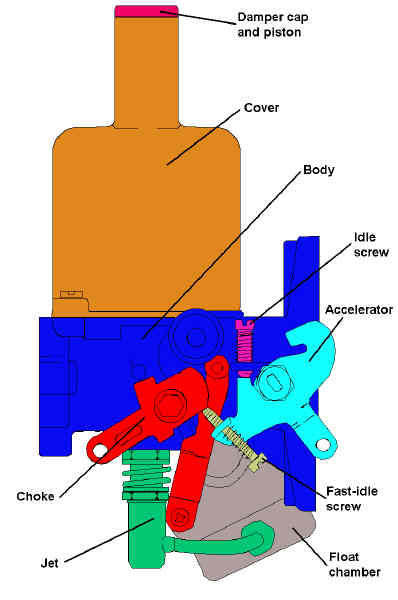Basic internal components. Although the piston is shown sitting on the bridge there is a 'striker' on one side of the needle - as arrowed on the inset - which holds the piston slightly up off the bridge to give some air-flow and mixture for cranking (although opinions vary). Originally brass it changed to plastic with a ball-bearing inside to wedge it into the piston:
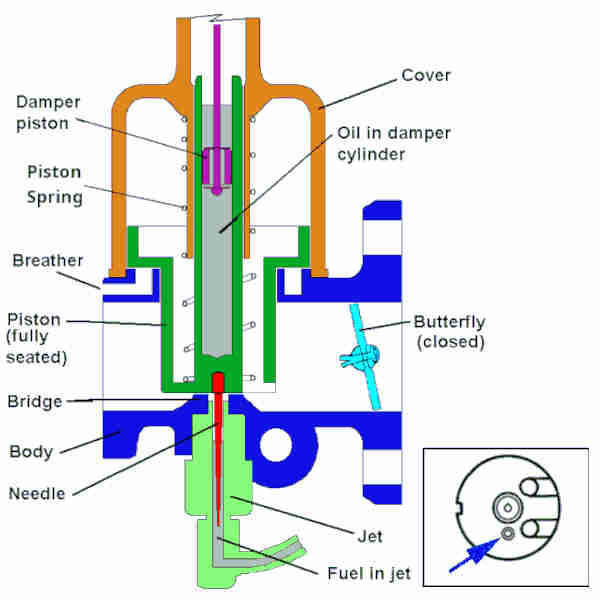
Throttle butterfly just opened, which applies a large vacuum to the space between the butterfly and the piston and hence to the space above the piston. The piston has air at atmospheric pressure below it so it tries to rise. As it does so the damper restricts how quickly oil can flow through it and hence how quickly the piston can rise. During this restriction the speed of the air flowing between the piston and bridge is increased which draws additional fuel from the jet, enriching the mixture for initial acceleration:
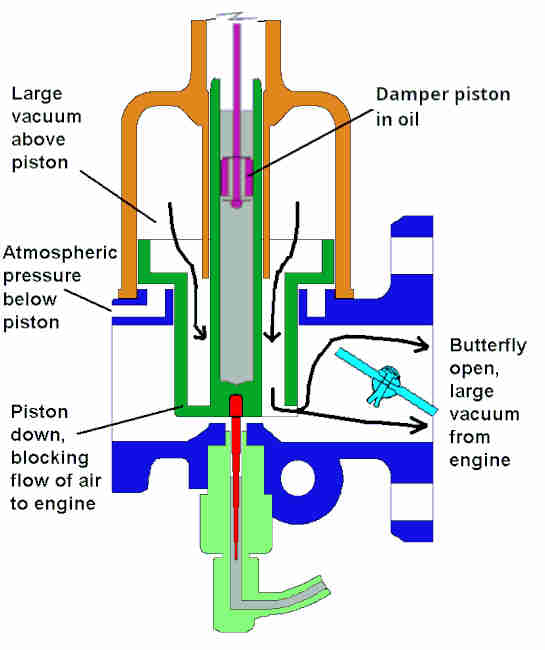
Once the piston has finished rising for a given throttle opening the speed of the air-flow across the jet slows, but the volume of air through the carb overall has increased. Whilst the slower speed across the jet tends to reduces how much fuel is drawn from it, a thinner part of the needle is now obstructing the jet which increases how much fuel is drawn, and with the greater volume of air flowing overall the mixture is restored to the correct ratio.
On deceleration the butterfly is closed reducing the vacuum above the main piston. When the main piston starts to fall oil flow through the damper is not restricted and the piston falls sharply.
Two steady state conditions giving equal vacuum between butterfly and piston for various throttle openings. The area under the piston skirt is maintained at atmospheric pressure from breather holes in the air-filter flange:
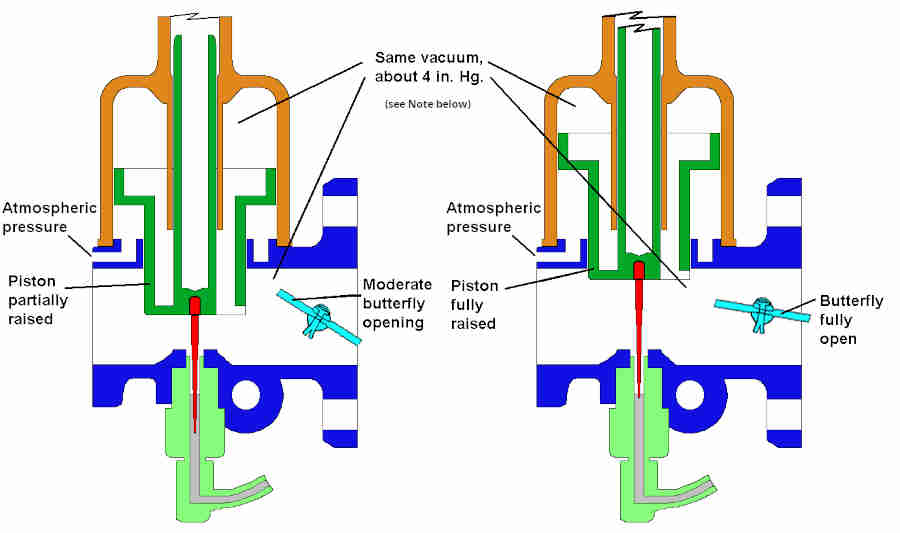
July 2022: 'Equal vacuum' has been questioned with the spring being compressed as the piston rises, which logically would require more vacuum to lift it the higher it goes. Any number of documents state the SU is a 'constant depression' carb which relates to the partial vacuum between the butterfly and piston (hence above the piston) under steady state conditions (i.e. not accelerating) at all piston positions. This Wikipedia reference states "Because the spring is operating over a very small part of its possible range of extension, its force is approximately constant". I came across the reference to '4 in. Hg.' many years ago and cannot remember where, so out of interest I hooked up my vacuum gauge to one of the carb PCV ports (testing the connections for leaks), sealing off the PCV hose that came off that port so as not to upset the mixture on the other carb. The only time I saw anything registered on the gauge was at full throttle and whilst keeping it there, barely more than 1 in. Hg., nothing on acceleration, with the needle not moving until almost at full throttle i.e. not a progressive increase as the throttle was opened. I suspect the enrichment at full throttle is deliberate design to protect the engine. Subsequently I plumbed both carb port to the vacuum gauge, again ensuring there were no leaks. Like this there was no vacuum registered until I had opened the throttle a good half-way for significant acceleration, where it registered about 1 in Hg, with barely anything more for full throttle. Cruising at any speed up to and including 70mph there was nothing registered. Disconnecting the gauge i.e. leaving the carb ports open the idle speed rose due to the vacuum leak, re-connecting the ports to the front tappet chest breather hose brought the idle speed back down again, and removing the oil filler cap also caused the idle speed to rise, all as expected, indicating the breather circuit was clear right through to the rocker cover with no leaks.
The flange breather holes arrowed here. These holes must be clear through the gasket and the air-filter base or the rise of the piston will be restricted and result in a rich mixture. This is an HS air-filter flange, but the 4-cylinder HIF is basically the same:
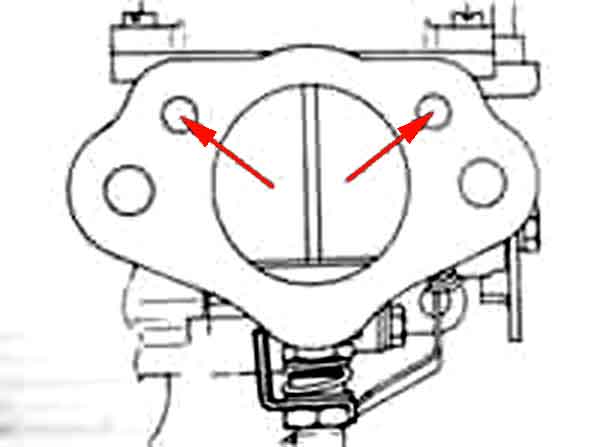
However the V8 HIFs (below) are quite different. Looking like Swiss cheese on the left, with a gasket fitted (right) only the fixing and breather holes are left open:
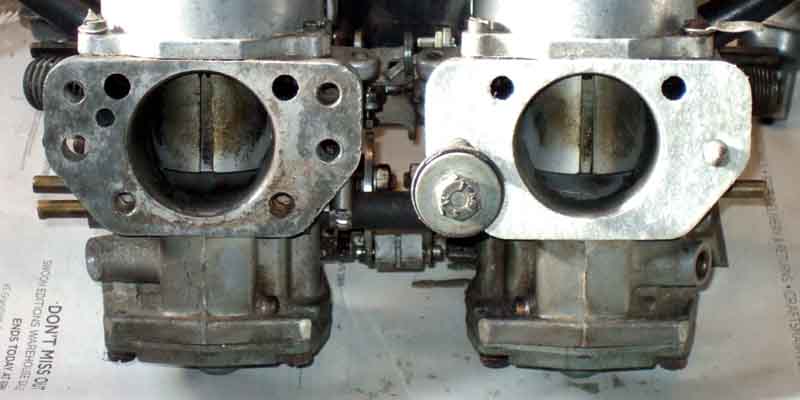
HS accelerator, idle, choke and fast-idle components:
